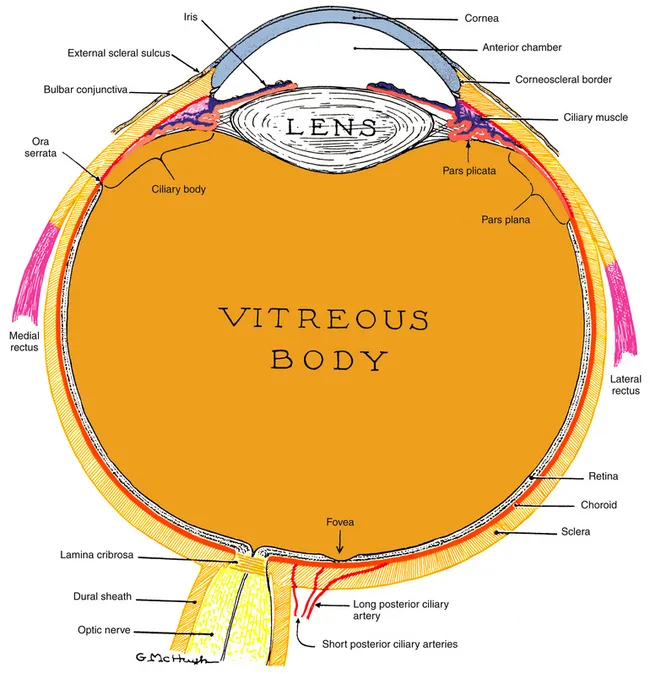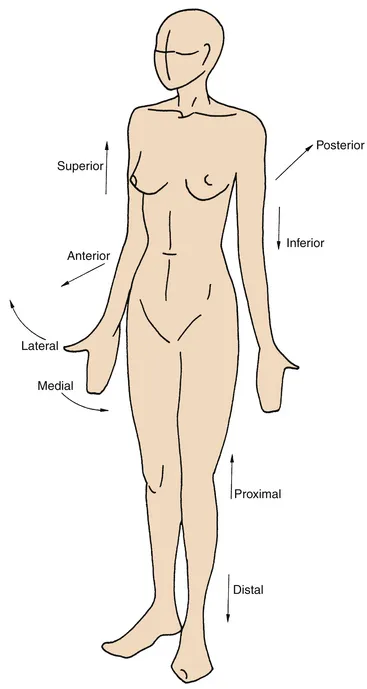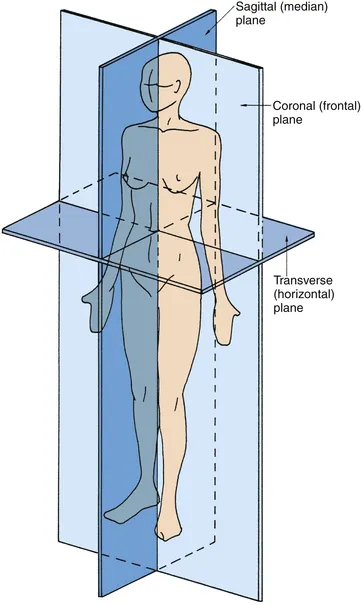
eBook - ePub
Clinical Anatomy of the Visual System E-Book
Lee Ann Remington, Denise Goodwin
This is a test
Condividi libro
- 302 pagine
- English
- ePUB (disponibile sull'app)
- Disponibile su iOS e Android
eBook - ePub
Clinical Anatomy of the Visual System E-Book
Lee Ann Remington, Denise Goodwin
Dettagli del libro
Anteprima del libro
Indice dei contenuti
Citazioni
Informazioni sul libro
Taking the place of the multiple texts traditionally needed to cover visual anatomy and physiology, Clinical Anatomy and Physiology of the Visual System, 3 rd Edition dramatically lightens your load by providing one book that covers it all! This concise, well-referenced resource contains information on the clinical anatomy of the eye, its adnexa and visual pathways, histologic information, plus newly added content on physiology of the human ocular structures. Vivid illustrations complement the text and provide clinical information on diseases and disorders that represent departures from normal clinical anatomy.
- Comprehensive physiology coverage clarifies the integration between structure and function, eliminating your need for multiple books on the anatomy and physiology of the visual system.
- An emphasis on clinical application helps you better understand the processes that occur in disease and dysfunction.
- Genetic information keeps you current with the latest developments in visual anatomy and physiology.
- Full-color illustrations throughout the text enhance your understanding of anatomical and clinical information.
- UNIQUE! Clinical Comment sections provide a solid foundation for recognizing and understanding clinical situations, conditions, diseases, and treatments.
- Photos of normal eye structures illustrate clinical appearance and demonstrate how appearance is directly related to structure.
- Geriatric coverage, including aging changes in ocular tissue and the visual pathway, keeps you up-to-date with the expanding field of geriatric care.
- UNIQUE! Expert coverage written by an actual optometrist gives you a practical framework for recognizing and understanding clinical situations, problems, and treatments.
Domande frequenti
Come faccio ad annullare l'abbonamento?
È semplicissimo: basta accedere alla sezione Account nelle Impostazioni e cliccare su "Annulla abbonamento". Dopo la cancellazione, l'abbonamento rimarrà attivo per il periodo rimanente già pagato. Per maggiori informazioni, clicca qui
È possibile scaricare libri? Se sì, come?
Al momento è possibile scaricare tramite l'app tutti i nostri libri ePub mobile-friendly. Anche la maggior parte dei nostri PDF è scaricabile e stiamo lavorando per rendere disponibile quanto prima il download di tutti gli altri file. Per maggiori informazioni, clicca qui
Che differenza c'è tra i piani?
Entrambi i piani ti danno accesso illimitato alla libreria e a tutte le funzionalità di Perlego. Le uniche differenze sono il prezzo e il periodo di abbonamento: con il piano annuale risparmierai circa il 30% rispetto a 12 rate con quello mensile.
Cos'è Perlego?
Perlego è un servizio di abbonamento a testi accademici, che ti permette di accedere a un'intera libreria online a un prezzo inferiore rispetto a quello che pagheresti per acquistare un singolo libro al mese. Con oltre 1 milione di testi suddivisi in più di 1.000 categorie, troverai sicuramente ciò che fa per te! Per maggiori informazioni, clicca qui.
Perlego supporta la sintesi vocale?
Cerca l'icona Sintesi vocale nel prossimo libro che leggerai per verificare se è possibile riprodurre l'audio. Questo strumento permette di leggere il testo a voce alta, evidenziandolo man mano che la lettura procede. Puoi aumentare o diminuire la velocità della sintesi vocale, oppure sospendere la riproduzione. Per maggiori informazioni, clicca qui.
Clinical Anatomy of the Visual System E-Book è disponibile online in formato PDF/ePub?
Sì, puoi accedere a Clinical Anatomy of the Visual System E-Book di Lee Ann Remington, Denise Goodwin in formato PDF e/o ePub, così come ad altri libri molto apprezzati nelle sezioni relative a Medicine e Opthalmology & Optometry. Scopri oltre 1 milione di libri disponibili nel nostro catalogo.
Informazioni
Chapter 1 Visual System
The visual system takes in information from the environment in the form of light and analyzes and interprets it. This process of sight and visual perception involves a complex system of structures, each of which is designed for a specific purpose. The organization of each structure enables it to perform its intended function.
The eye houses the elements that take in light rays and changes them to a neural signal; it is protected by its location within the bone and connective tissue framework of the orbit. The eyelids cover and protect the anterior surface of the eye and contain glands that produce the lubricating tear film. Muscles, attached to the outer coat of the eye, control and direct the globe’s movement, and the muscles of both eyes are coordinated to provide binocular vision. A network of blood vessels supplies nutrients, and a complex system of nerves provides sensory and motor innervation to the eye and surrounding tissues and structures. The neural signal that carries visual information passes through a complex and intricately designed pathway within the central nervous system, enabling an accurate view of the surrounding environment. This information, evaluated by a process called visual perception, influences myriad decisions and activities.
This book examines the macroscopic and microscopic anatomy and physiology of the components in this complex system and the structures that support it.
The Eye
Anatomic Features
The eye is a special sense organ made up of three coats, or tunics, as follows:
1. The outer fibrous layer of connective tissue forms the cornea and sclera.
2. The middle vascular layer is composed of the iris, ciliary body, and choroid.
3. The inner neural layer is the retina.
Within this globe are three spaces: the anterior chamber, posterior chamber, and vitreous chamber. The crystalline lens is located in the region of the posterior chamber (Figure 1-1).

Figure 1-1 The visual system.
(From Kronfeld PC: The human eye, Rochester, NY, 1943, Bausch & Lomb Press.)
The outer dense connective tissue of the eye provides protection for the structures within and maintains the shape of the globe, providing resistance to the pressure of the fluids inside. The sclera is the opaque white of the eye and is covered by the transparent conjunctiva. The transparent cornea allows light rays to enter the globe and, by refraction, helps bring these light rays into focus on the retina. The region in which the transition from cornea to sclera and conjunctiva occurs is the limbus.
The vascular layer of the eye is the uvea, which is made up of three structures, each having a separate function but all are interconnected. Some of the histologic layers are continuous throughout all three structures and are derived from the same embryonic germ cell layer. The iris is the most anterior structure, acting as a diaphragm to regulate the amount of light entering the pupil. The two iris muscles control the shape and diameter of the pupil and are supplied by the autonomic nervous system. Continuous with the iris at its root is the ciliary body, which produces the components of the aqueous humor and contains the muscle that controls the shape of the lens. The posterior part of the uvea, the choroid, is an anastomosing network of blood vessels with a dense capillary network; it surrounds the retina and supplies nutrients to the outer retinal layers.
The neural tissue of the retina, by complex biochemical processes, changes light energy into a signal that can be transmitted along a neural pathway. The signal passes through the retina, exits the eye through the optic nerve, and is transmitted to various parts of the brain for processing.
The interior of the eye is made up of three chambers. The anterior chamber is bounded in front by the cornea and posteriorly by the iris and anterior surface of the lens. The posterior chamber lies behind the iris and surrounds the equator of the lens, separating it from the ciliary body. The anterior and posterior chambers are continuous with one another through the pupil, and both contain aqueous humor that is produced by the ciliary body. The aqueous humor provides nourishment for the surrounding structures, particularly the cornea and lens. The vitreous chamber, which is the largest space, lies adjacent to the inner retinal layer and is bounded in front by the lens. This chamber contains a gel-like substance, the vitreous humor.
The crystalline lens is located in the area of the posterior chamber and provides additional refractive power for accurately focusing images onto the retina. The lens must change shape to view an object that is close to the eye, through the mechanism of accommodation.
Anatomic Directions and Planes
Anatomy is an exacting science, and specific terminology is basic to its discussion. The following anatomic directions should be familiar (Figure 1-2):
• Anterior, or ventral: toward the front
• Posterior, or dorsal: toward the back
• Superior, or cranial: toward the head
• Inferior, or caudal: away from the head
• Medial: toward the midline
• Lateral: away from the midline
• Proximal: near the point of origin
• Distal: away from the point of origin

Figure 1-2 Anatomic directions.
(From Palastanga N, Field D, Soames R: Anatomy and human movement, Oxford, UK, 1989, Butterworth-Heinemann.)
The following planes are used in describing anatomic structures (Figure 1-3):
• Sagittal: vertical plane running from anterior to posterior locations, dividing the structure into right and left sides.
• Midsagittal: sagittal plane through the midline, dividing the structure into right and left halves.
• Coronal or frontal: vertical plane running from side to side, dividing the structure into anterior and posterior parts.
• Transverse: horizontal plane dividing the structure into superior and inferior parts.

Figure 1-3 Anatomic planes.
(From Palastanga N, Field D, Soames R: Anatomy and human movement, Oxford, UK, 1989, Butterworth-Heinemann.)
Because the globe is a spherical structure, references to locations can sometimes be confusing. In references to anterior and posterior locations of the globe, the anterior pole (i.e., center of the cornea) is the reference point. For example, the pupil is anterior to the ciliary body (see Figure 1-1). When layers or structures are referred to as inner or outer, the reference is to the entire globe unless specified otherwise. The point of reference is the center of the globe, which would lie within the vitreous. For example, the retina is inner to the sclera (see Figure 1-1). In addition, the term sclerad is used to mean “toward the sclera,” and vitread is used to mean “toward the vitreous.”
Refractive Conditions
If the refractive power of the optical components of the eye, primarily the cornea and lens, correlate with the distances between the cornea, lens, and retina so that incoming parallel light rays come into focus on the retina, a clear image will be seen. This condition is called emmetropia (Figure 1-4, A). No correction is necessary for clear distance vision. In hyperopia (farsightedness), the distance from the cornea to the retina is too short for the refractive power of the cornea and lens, thereby causing images that would come into focus behind the retina (Figure 1-4, B). Hyperopia can be corrected by placing a convex lens in front of the eye to increase the convergence of the incoming light rays. In myopia (nearsightedness), because the lens and cornea are too strong or, more likely, the eyeball is too long, parallel light rays are brought into focus in front of the retina (Figure 1-4, C). Myopia can be corrected by plac...